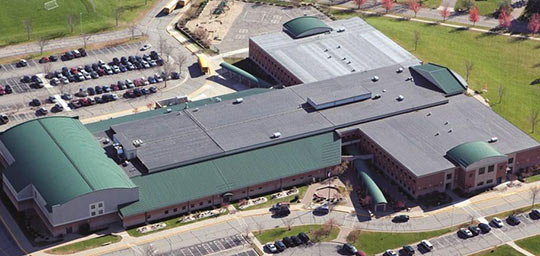Limiting the white roof LEED point for urban heat island mitigation: logic for a proposed change.
Carlisle and the EPDM Roofing Association (ERA) believe the LEED rating system would be strengthened by limiting the white roof LEED point to buildings located in southern climates (typically ASHRAE Zones 1-3) and urban settings where cooling demands outweigh heating demands. The reasons for this proposal are outlined below and detailed in a letter sent to LEED-certified design professionals.
 Consider a black EPDM roof in heating-dominated climates.
Consider a black EPDM roof in heating-dominated climates.
As an organization representing the largest manufacturers of both white and black commercial roofing membranes, ERA strives to provide the industry with credible information that allows people to make educated decisions. As stated in the letter, no product is ideally suited for every building or climate, which is why ERA members manufacture a wide variety of products to provide optimal solutions for each building’s unique needs.
- White roofs increase energy costs, natural resource consumption, and CO2 emissions in heating-dominated climates
- Reflected heat from white roofs may increase global warming
- White roofs may lead to changes in rainfall patterns
- Superior sustainability and weatherability of rubber roofs
- Increased reroofing frequency and landfill waste with white roofs
- Superior hail resistance of rubber roofs
- Condensation issues with white roofs
- Winter safety issues with white roofs
- Aesthetics of LEED buildings with white roofs
- Public safety and air quality issues
Click here to read the full letter and review with your facilities team. For additional information, contact Ron Goodman at Ron.Goodman@CarlisleCCM.com.
|
